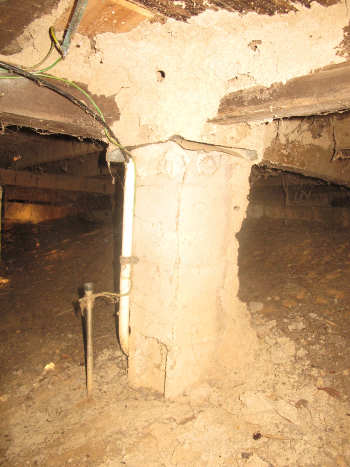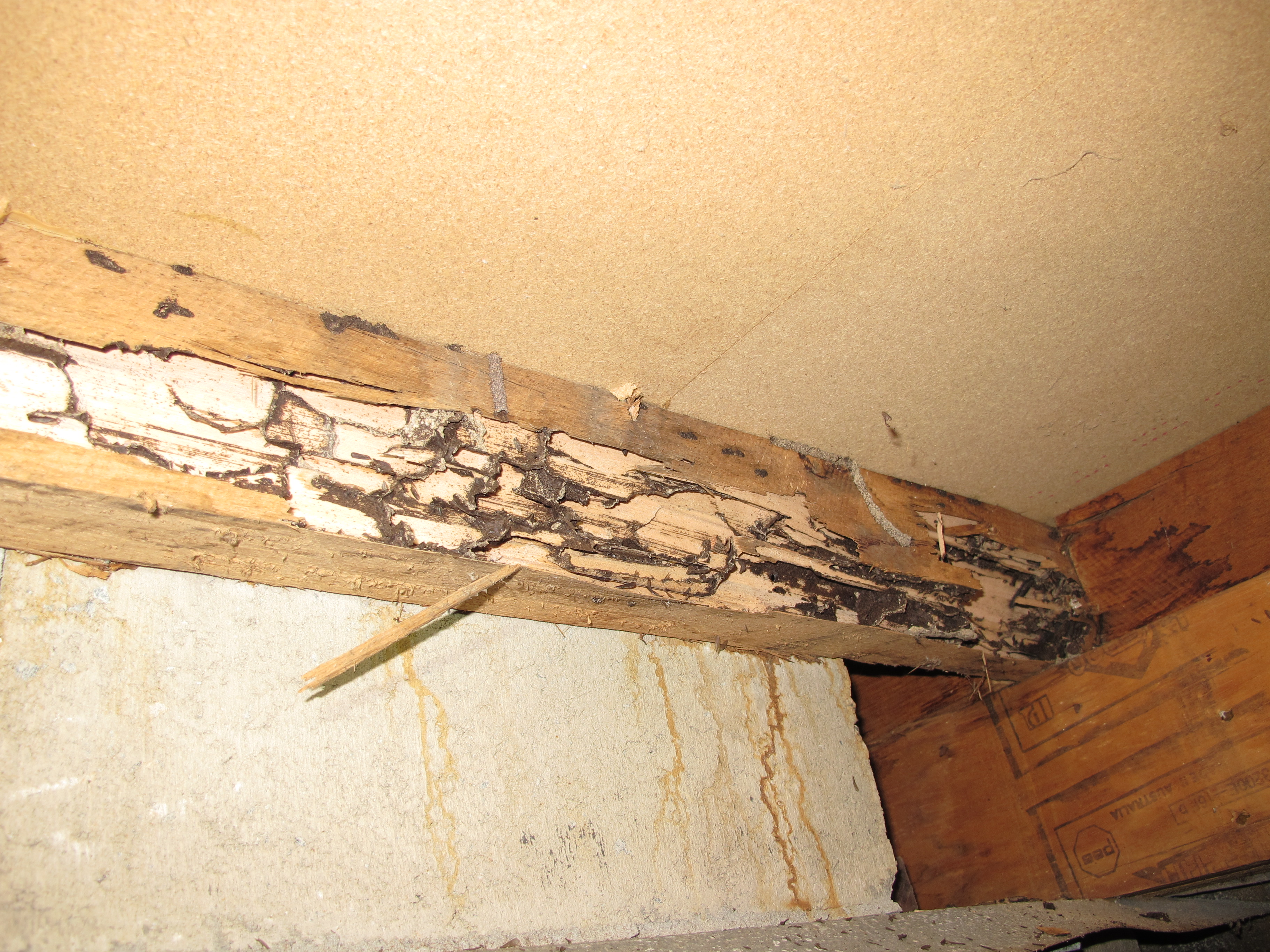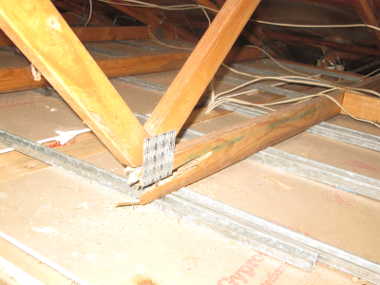Protect your investment against pests and termites with a thorough pest inspection
Otherwise known as a Termite Inspection
Termites cause more damage to property in Australia every year than all the natural disasters put together. Our Pest Inspections provide four aspects:
Identify Assess Advise Recommend
Identify termites & borers
Assess the extent of damage
Advise on conditions attractive to termites
Recommend how to reduce your risk of termite attack

The Australian Standard 4349.1 – 2007 specifies that a person doing pre- purchase residential building inspections needs to be "competent" and have "experience", there are no regulations to enforce this in NSW. Since the industry was deregulated by the state government in 2009, building and pest inspectors are no longer legally required to be licensed builders, termite specialists or to have professional indemnity insurance.
The difficulty for consumers is that typically their decision is price driven and they try to get the most inexpensive pre-purchase report thinking all Reports are the same. That sways people more than who is doing the job rather than their qualifications and years of experience.
Whereas our Termite Inspectors are both Qualified, with over 30 years experience and have the necessary Indemnity Insurances.
The contract to purchase a property relies on caveat emptor – buyer beware. The pest and building report identifies visible problems and helps buyers decide whether to proceed.
Termites can quickly damage a property. They can travel many metres to find timber to feed on and within a short time, a timber frame can be damaged and even lose its structural integrity.

It can be very difficult to identify a termite infestation, because they travel underground and often enter a building unseen. This is why an annual termite inspection is important – so that any signs of termites can be detected early on and a termite control program initiated. No new property owner wants to be faced with an unexpected pest infestation and the costs involved in repairing the damage.
The current owners of the property may have no idea that they have a termite infestation, so it pays to do your own due diligence before you make your final decision.
Also, many financial institutions won’t lend money to purchase a property without a professional pest inspection report.
Our Licensed Pest Inspector will inspect for evidence of old termite activity as well as current infestations and will document any infestations and any visible damage caused by the termites. The inspection report may also describe whether a termite barrier exists on the property and whether any remedial control programs have been put in place.
Firstly, the obvious fact is that two pairs of eyes inspecting the one house are more likely to ensure that all faults are detected.

Secondly, the building and pest inspection processes are very different. A "jack of all trades" approach is inadequate. The Australian Standard stipulates that the pest report is classified as a "special purpose report" and a specialised report separate to that of the building report must be produced. Therefore, it is our opinion that two separate inspectors should always be used.
The consultant should inspect all accessible parts of the property. These include the following areas:
You may like to ask that a particular part of the property also be inspected. The following items would normally be included in a building inspection report:
The consultant normally wouldn't check things such as:
Reports are in accordance with the Australian Standards, AS 4349.1-2007, AS 4349.3-2010 and AS 4349.0-2007.

Timber Pest Inspections offer the confidence and assurance required to eliminate the possibility of termite and other timber pest activity. As purchasing a home is a major investment, a Timber Pest Inspection can provide assurance in eliminating the possibility of termite and other timber pest activity. For peace of mind, and at a minimal cost, our certified Pest Inspector will conduct a thorough and professional Pre-Purchase Visual Timber Pest Inspection.
We inspect all accessible areas of the property - subfloors spaces, roof spaces, interior, and exterior of the property, sheds, outbuildings and fences within 30 metre of the property being inspected. A thorough report including digital photographs will be emailed or posted to you directly, and/ or to a solicitor/ conveyancer of your choice.
A timber pest inspection will reveal any timber pest damage or activity at the time of inspection. Although there may be no visual evidence of timber pest activity, the property could still be considered to be at a high risk of attack due to conditions conducive to timber pest infiltration. Therefore booking an annual pest inspection is advised by all pest managers.
Your Visual Timber Pest Inspection Report is compliant with Australian Standard AS 4349.3.
Here’s an outline of the information you’ll see in your report:
A summary of any timber pest activity or existing damage found, including that caused by termites, borers or wood decay fungi.
Individual sections detailing timber pest activity or damage to the:
Evidence of prior termite treatment to the property, if any.
Summary of recommendations relating to more comprehensive timber pest inspection or control measures, if appropriate. Key issues within these Reports are to : Identify - Access - Advise - Recommend
The Timber Pest Report will include recommendations for steps to be taken to reduce the risk of timber pest attack and where necessary, recommendations for remedial work to control termite attack. The inspector will report on any areas or factors present that are conducive to timber pest attack such as water leaks, poor subfloor ventilation, timber stored below or against buildings etc.
Timber pest inspectors should have an understanding of the behaviour and biology of timber pests, the damage they cause and methods of control and risk reduction. They should also carry adequate insurance to protect their clients against errors and omissions.
A timber pest report does NOT report on other pests which do not threaten timber such as fleas, ants, cockroaches, rats, mice etc although the report may make mention of them.
Accessible areas only are inspected and the inspector may make recommendations for further access to be made or for more specialist inspections to be carried out such as thermal imaging or fibre optic inspections with a borescope.
Here are a few signs that termites might be wreaking havoc on your home:
Temperature and rainfall seem to have the largest impact on termite activity, followed by the house's age. If you stumble across a termite nest on your property, don't disturb it until you've determined an appropriate termite management plan with a qualified pest manager. Once disturbed, termites might abandon the area, move elsewhere and remain undetected.
Termites don't just eat away at structural timbers, they can also chomp their way through furniture, paper products, fabrics, clothing, footwear and even non-cellulose materials like soft plastics, building sealants and rigid foam insulation.
Termites are social insects that build large nests in soil or wood and can occasionally cause damage to wooden structures. They are sometimes called 'white ants', however they belong to a completely different insect group (Order Isoptera) to true ants (Order Hymenoptera).
Termites have pale brown to white bodies with a darker head and have no waist between the thorax and abdomen. The antennae have bead-like segments. The non-reproductive forms never develop wings, are blind, and have thin skin that makes them vulnerable to drying out. Reproductive forms have two pairs of equal-sized wings, one pair of compound eyes and a thicker skin that protects them better from drying out when exposed.
Nests are formed either in trees, in soil mounds or underground. There are 5 main nest types and many species will build more than one type of nest: